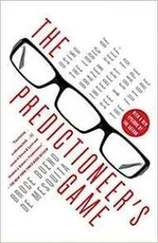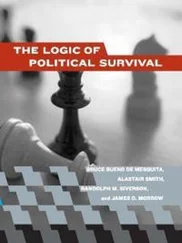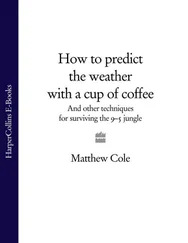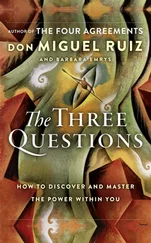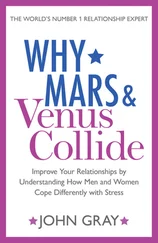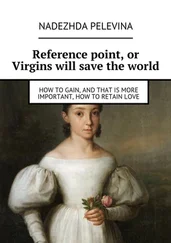Chapter 1: What Will It Take to Put You in This Car Today?
1. See the Jobs Rated Almanac ratings at http://www.egguevara.com/shopping/articles/jobsrated.html.
2. If you think body language is not important, do a search online for “negotiation and body language.” You will find article after article about how close sellers should place themselves to buyers, how they should use their hands and arms, facial expressions, etc. to improve the price they get and the odds of closing deals.
Chapter 2: Game Theory 101
1. John von Neumann and Oskar Morgenstern, Theory of Games and Economic Behavior (Princeton: Princeton University Press, 1947).
2. Sylvia Nasar, A Beautiful Mind: The Life of Mathematical Genius and Nobel Laureate John Nash (New York: Simon & Schuster, 1998). For progressively more thorough and technical introductions to game theory, starting with a completely readable nontechnical treatment, see Avinash K. Dixit and Barry J. Nalebuff, Thinking Strategically : The Competitive Edge in Business, Politics and Everyday Life (New York: W. W. Norton, 1991); James D. Morrow, Game Theory for Political Scientists (Princeton: Princeton University Press, 1994); Martin J. Osborne, An Introduction to Game Theory (Oxford: Oxford University Press, 2003); and Drew Fudenberg and Jean Tirole, Game Theory (Cambridge, Mass.: MIT Press, 1991).
3. Six dollars per day falls in the middle of the World Bank’s estimate of per capita income for Iraq in 2007. Unlike for most countries, for Iraq the World Bank is not able to provide a firm number. Other estimates seem to be based on the World Bank’s range.
4. Brian Kolodiejchuk, ed., Mother Teresa : Come Be My Light—The Private Writings of the Saint of Calcutta (New York: Doubleday, 2007).
5. See Irene Hau-siu Chow, Victor P. Lau, Thamis Wing-chun Lo, Zhenquan Sha, and He Yun, “Service Quality in Restaurant Operations in China: Decision-and Experiential-Oriented Perspectives,” International Journal of Hospitality Management 26, no. 3 (September 2007): 698–710.
6. For the math mavens out there, the circle is a special case in which each dimension is of equal importance to the player. If one dimension is more important than the other, then we should draw an ellipse, each of whose radii reflects the relative importance of the issues. I skip this complicating detail here.
7. Those mathematically inclined and interested in delving more deeply into how it is possible for rational decision makers to move from any policy combination to any other, see Richard McKelvey, “Intransitivities in Multidimensional Voting Models and Some Implications for Agenda Control,” Journal of Economic Theory 12 (1976): 472–82; Richard McKelvey, “General Conditions for Global Intransitivities in Formal Voting Models,” Econometrica 47 (1979): 1085–1112; and Norman Schofield, “Instability of Simple Dynamic Games,” Review of Economic Studies 45 (1978): 575–94.
8. For a careful study of steroid use that is broadly consistent with the values used in this example, see Jenny Jakobsson Schulze, Jonas Lundmark, Mats Garle, Ilona Skilving, Lena Ekström, and Anders Rane, “Doping Test Results Dependent on Genotype of Uridine Diphospho-Glucuronosyl Transferase 2B17, the Major Enzyme for Testosterone Glucuronidation,” Journal of Clinical Endocrinology & Metabolism 93, no. 7 (July 2008): 2500–2506. Based on the values in this study, about 9 percent of a random sample from the population would falsely test positive. I assume 10 percent.
9. Bayes’ Theorem allows us to answer the question “What is the probability a person is of a particular type (such as a performance enhancing steroid user) given that they say or do something in particular (such as test positive for steroids)?” To answer this question we must solve the following calculation: Let P stand for probability, R for being a steroid user, S for testing positive, and ∼R for being the type of baseball player who does not use steroids. The straight line symbol | is read as “given.” Then  is read as “the probability of being a steroid user given that you tested positive (P[R | S]) equals the probability of testing positive given that you are a steroid user times the probability of being a steroid user divided by that same quantity plus the probability of testing positive given that you are not a steroid user times the probability that you are not a steroid user.” Thus, the calculation is conditioned on the two sets of people who test positive: those who use steroids and those who don’t. In the baseball example this translates into P ( R|S )
is read as “the probability of being a steroid user given that you tested positive (P[R | S]) equals the probability of testing positive given that you are a steroid user times the probability of being a steroid user divided by that same quantity plus the probability of testing positive given that you are not a steroid user times the probability that you are not a steroid user.” Thus, the calculation is conditioned on the two sets of people who test positive: those who use steroids and those who don’t. In the baseball example this translates into P ( R|S ) 
Chapter 3: Game Theory 102
1. The first major efforts to show that arms races lead to war are the work of Lewis Fry Richardson, a distinguished meteorologist who predicted World War I but, using the same logic, failed to anticipate World War II. See his Arms and Insecurity (Chicago: Quadrangle, 1960). The literature tying arms races to war is vast but almost universally fails to consider that arms purchases are anticipatory, or, in game-theory lingo, they are endogenous, strategic decisions.
2. The subject of renegotiation-proofness has attracted the interest of many economists, leading to a vast literature. Some seminal papers include Dilip Abreu, David Pearce, and Ennio Stacchetti, “Renegotiation and Symmetry in Repeated Games,” Journal of Economic Theory 60, no. 2 (1993): 217–40; Jean-Pierre Benoit and Vijay Krishna, “Renegotiation in Finitely Repeated Games,” Econometrica 61 (1993): 303–23; and James Bergin and W. Bentley MacLeod, “Efficiency and Renegotiation in Repeated Games,” Journal of Economic Theory 61, no. 1 (1993): 42–73.
3. The seminal work on this question dates back to the eighteenth-century French philosopher, mathematician, and nobleman the Marquis de Condorcet. Regrettably, the latter characteristic—he opposed beheading the king and queen—cost him his life during the French Revolution. There is a wonderful statue of him on the left bank of the Seine, not too far from Notre Dame. I always pay homage to him when I am in Paris. His insights were built upon in the second half of the twentieth century to establish the modern understanding of voting methods. See, for instance, Kenneth Arrow, Social Choice and Individual Values (New York: John Wiley and Sons, 1951); William H. Riker, Liberalism Against Populism (New York: Freeman, 1982); Richard D. McKelvey and Norman Schofield, “Structural Instability of the Core,” Journal of Mathematical Economics 15, no. 3 (June 1986): 179–98; and Gary W. Cox, Making Votes Count (New York: Cambridge University Press, 1997).
Chapter 4: Bombs Away
1. Stanley Feder, “Factions and Policon: New Ways to Analyze Politics,” in H. Bradford Westerfield, ed., Inside CIA’s Private World : Declassified Articles from the Agency’s Internal Journal, 1955–1992 (New Haven: Yale University Press, 1995).
2. This is a casual statement of the median voter theorem, one of the most important concepts in understanding issue resolutions. See Duncan Black, The Theory of Committees and Elections (Cambridge: Cambridge University Press, 1958), and Anthony Downs, An Economic Theory of Democracy (New York: Harper, 1957).
3. This second first-cut prediction relies on the mean voter theorem. See Andrew Caplin and Barry Nalebuff, “Aggregation and Social Choice: A Mean Voter Theorem,” Econometrica 59 (1991): 1–23; and Norman Schofield, “The Mean Voter Theorem: Necessary and Sufficient Conditions for Convergent Equilibrium,” Review of Economic Studies 74 (2007): 965–80.
Читать дальше
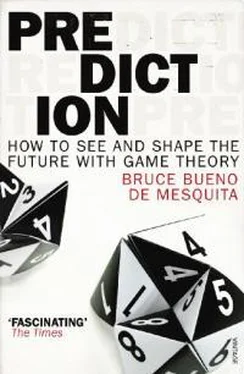
 is read as “the probability of being a steroid user given that you tested positive (P[R | S]) equals the probability of testing positive given that you are a steroid user times the probability of being a steroid user divided by that same quantity plus the probability of testing positive given that you are not a steroid user times the probability that you are not a steroid user.” Thus, the calculation is conditioned on the two sets of people who test positive: those who use steroids and those who don’t. In the baseball example this translates into P ( R|S )
is read as “the probability of being a steroid user given that you tested positive (P[R | S]) equals the probability of testing positive given that you are a steroid user times the probability of being a steroid user divided by that same quantity plus the probability of testing positive given that you are not a steroid user times the probability that you are not a steroid user.” Thus, the calculation is conditioned on the two sets of people who test positive: those who use steroids and those who don’t. In the baseball example this translates into P ( R|S ) 


